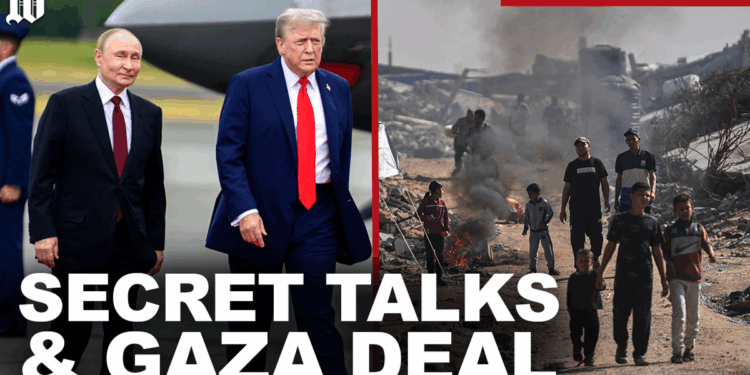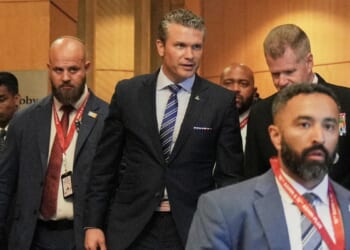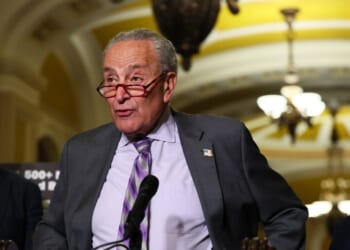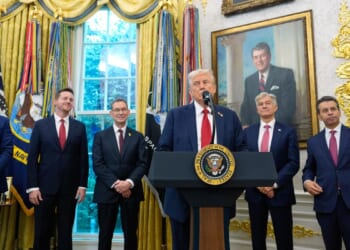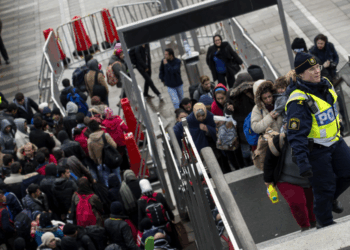Hi, I’m George Gerbo and welcome to Washington Times Weekly, where we get a chance to sit down with our reporters and check out the latest news and events that they are covering.
And joining me today, our National Security Editor, team leader, Jack of All Trades, and our Threat Status correspondent, Guy Taylor.
[GERBO] Let’s start with Ukrainian President Volodymyr Zelenskyy. He will be meeting with Turkish President Recep Erdogan.
[TAYLOR] Already did.
[GERBO] Already did meet with Turkish President Recep Erdogan. We’re getting these reports about a back-channel potential peace deal between Ukraine, Russia, but Ukraine’s not necessarily been a party to it yet, correct? And Russia is working with the United States to perhaps bring an end to this war that’s gone on now for three-plus years. What is the latest? What are the details that we know about how this is going?
[TAYLOR] It’s hard to figure out whether there’s suddenly momentum for peace talks over Ukraine. Remember that last month, President Trump was touting that he was going to have a big meeting with Russian President Vladimir Putin in Hungary. That meeting just ultimately got canceled. It’s almost as if every time the Trump administration tries to inject momentum into this goal of end-of-war talks or some kind of peace, ceasefire agreement, it falls flat.
The latest is that the administration, either intentionally or unintentionally, has leaked that there are some kind of secretive back-channel talks going on between U.S. Special Envoy Steve Witkoff and his Russian counterparts, and that there is the framework of some kind of end-of-war deal, 28 points. The problem here is that this has not been publicly announced, and the 28 points don’t look very different from some of the things that the Trump administration was floating months ago. And there doesn’t seem to be any buy-in at this point from the Ukrainian government and Zelenskyy.
So Zelenskyy went to Turkey in recent days. Remember, Turkey is a big NATO ally, and interestingly, kind of sits between NATO and Russia. Erdogan has a relationship with Vladimir Putin. And Zelenskyy announced he was going to go there to talk about the prospect of a peace plan. But then the Russians responded and they said, “we’re not coming.” They didn’t show up. And so Zelenskyy’s meetings in Turkey turned into trying to cozy up to Erdogan and win his support for an ongoing fight against the Russian invaders. So we’re in this kind of “let’s wait and see,” let’s watch closely to see if the Ukrainians come up with any kind of response to this plan and whether or not the Trump administration announces anything publicly.
Last point on this is really important. What has leaked out about these back-channel talks with the Russians involves a lot of concessions that would need to be made by Ukraine, such as giving the Russians the Crimean Peninsula, giving them most of the Donbas, which their troops occupy, some large swath of eastern Ukraine, something that Ukraine’s government is highly unlikely to accept. So we’re watching it. We’re covering it in the Threat Status newsletter every day. We’ll keep an eye on it.
[GERBO] Another thing you guys have been covering, this meeting at the White House that occurred between Saudi Crown Prince, Mohammed bin Salman, and President Trump. Extraordinary in its nature to see the leader of — as little as 20 years ago, I would consider a U.S. adversary — and now a key ally or strategic ally, as the White House, the administration describes it, especially in that region. They would like Saudi Arabia to sign on to the Abraham Accords. Saudi Arabia would like some help with AI and chips. And how does this relationship develop now from this in-person meeting that’s taken place?
[TAYLOR] Very high-stakes summit at the White House on November 17. And Mohammed bin Salman, he will be the king eventually of Saudi Arabia. He’s commonly known as MBS by his initials. It was really a love fest between him and President Trump, and Trump has articulated big U.S. interests in creating stability in the Middle East. And he sees Saudi Arabia as really the big, Gulf Arab power and counterweight to Iran, as this big-time U.S. security partner. The problem is that Saudi Arabia does not have any diplomatic recognition or diplomatic normalization with Israel, which is the other big U.S. ally in the region.
So, a couple of takeaways from this summit. One was that MBS and Trump re-upped a strategic security agreement. And part of that involved Trump saying that they had a deal for the U.S. to sell much sought-after next-generation F-35 fighter jets to Saudi Arabia. Saudis have wanted this for a long time. It’s cutting-edge technology. The Saudis have always wanted some kind of military parity with Israel to get the same types of deals and support from the United States that the U.S. offers to Israel. And it’s vague. We don’t know when those jets are going to be delivered. Obviously, it’s a big deal for the U.S. defense industrial base. What MBS told Trump was that Saudi Arabia is committed to putting up a trillion dollars of investment in the United States. So pretty big quid pro quo there.
Watch the video to see the full conversation.
Read more from Threat Status
See more from Washington Times Weekly
Click here to receive the daily Threat Status newsletter delivered directly to your inbox.

